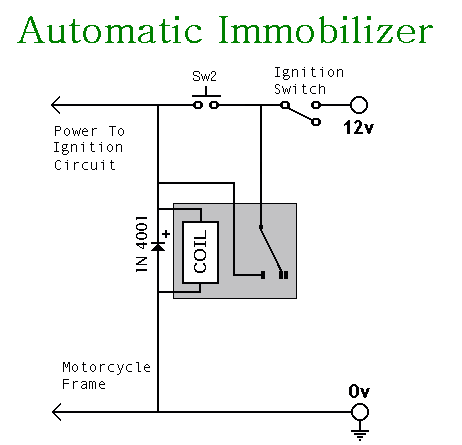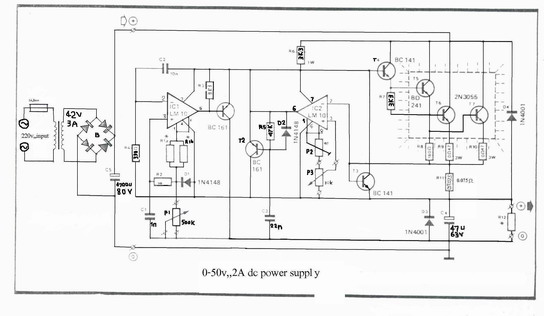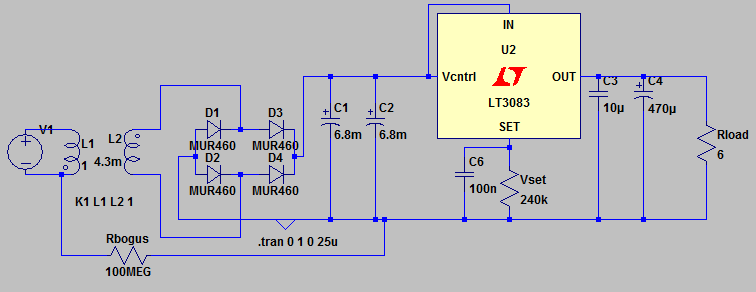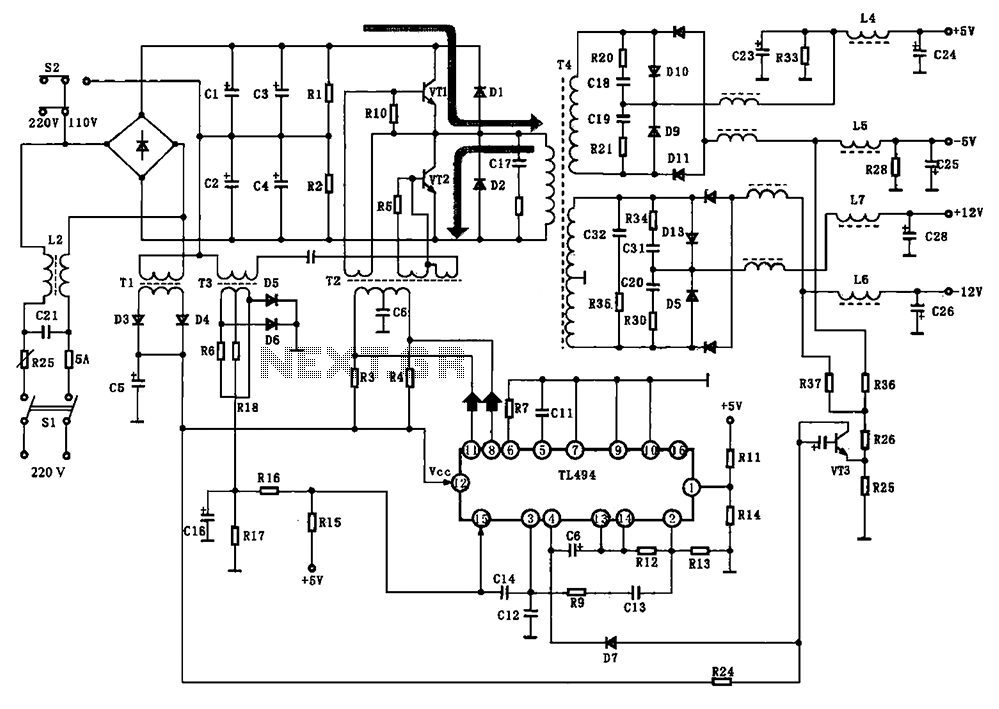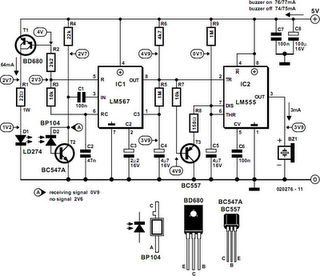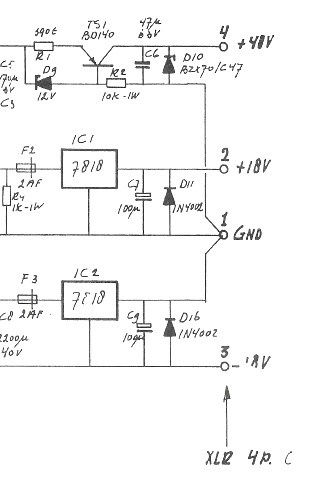
Mains Supply Failure Alarm

When the AC mains supply fails, this circuit triggers an alarm to alert the user. Additionally, it offers a backup light to assist in locating a flashlight or other emergency lighting.
This circuit is designed to provide immediate notification and assistance during a power outage. It typically consists of several key components: a power supply, an alarm system, a backup light source, and a control unit.
The power supply is often derived from a rechargeable battery, which ensures that the circuit remains operational even when the mains power is unavailable. The control unit monitors the status of the AC mains supply using a relay or a microcontroller. When a power failure is detected, the control unit activates the alarm system, which may include a buzzer or speaker to emit a loud sound, alerting individuals in the vicinity of the outage.
Simultaneously, the control unit activates the backup light source, which can be an LED or incandescent bulb, providing illumination to assist users in navigating their environment safely. The backup light may be designed to remain lit for a predetermined duration or until the mains power is restored, depending on the circuit's configuration.
Additional features may include a test button to verify the functionality of the alarm and light, as well as indicators to show the status of the battery charge. The circuit may also incorporate a low battery indicator to alert users when the backup power source requires recharging.
Overall, this circuit serves a critical role in enhancing safety and convenience during power outages, ensuring that individuals can quickly and effectively respond to unexpected loss of electrical power.Whenever AC mains supply fails, this circuit alerts you by sounding an alarm. It also provides a backup light to help you find your way to the torch or th.. 🔗 External reference
This circuit is designed to provide immediate notification and assistance during a power outage. It typically consists of several key components: a power supply, an alarm system, a backup light source, and a control unit.
The power supply is often derived from a rechargeable battery, which ensures that the circuit remains operational even when the mains power is unavailable. The control unit monitors the status of the AC mains supply using a relay or a microcontroller. When a power failure is detected, the control unit activates the alarm system, which may include a buzzer or speaker to emit a loud sound, alerting individuals in the vicinity of the outage.
Simultaneously, the control unit activates the backup light source, which can be an LED or incandescent bulb, providing illumination to assist users in navigating their environment safely. The backup light may be designed to remain lit for a predetermined duration or until the mains power is restored, depending on the circuit's configuration.
Additional features may include a test button to verify the functionality of the alarm and light, as well as indicators to show the status of the battery charge. The circuit may also incorporate a low battery indicator to alert users when the backup power source requires recharging.
Overall, this circuit serves a critical role in enhancing safety and convenience during power outages, ensuring that individuals can quickly and effectively respond to unexpected loss of electrical power.Whenever AC mains supply fails, this circuit alerts you by sounding an alarm. It also provides a backup light to help you find your way to the torch or th.. 🔗 External reference
